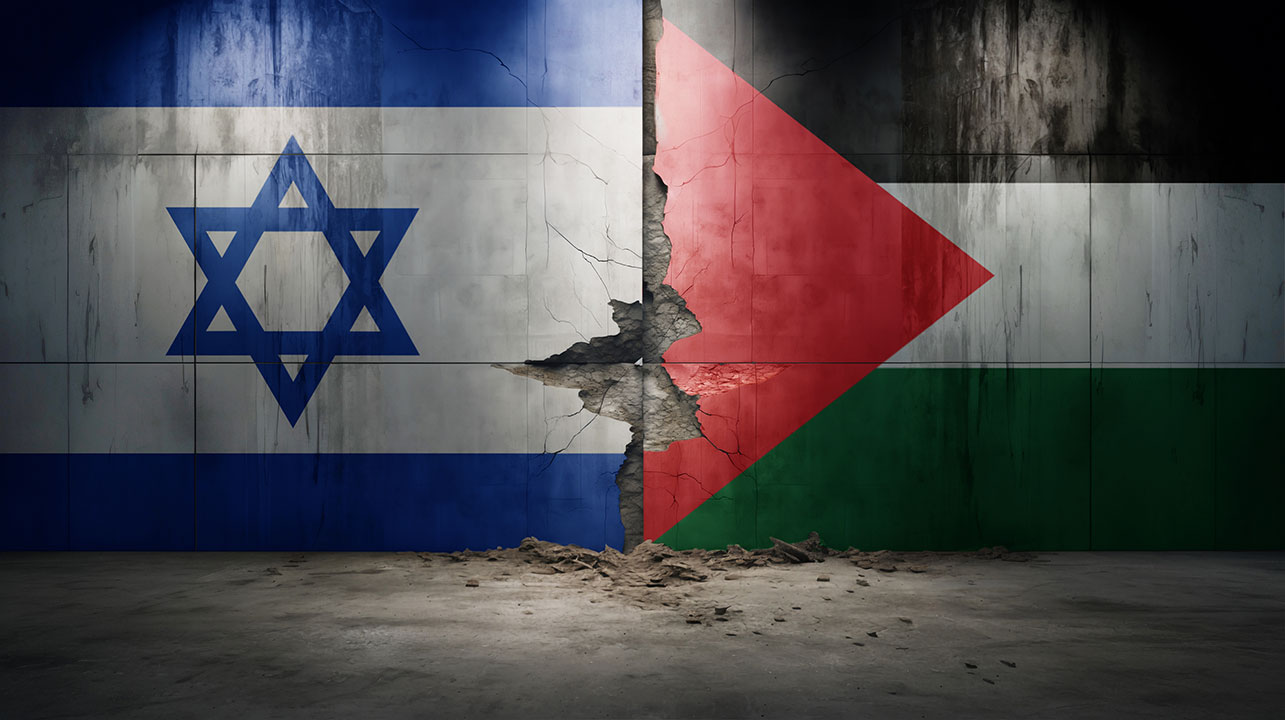
Yellow Pad
By Ed Quitoriano

Images of displacement, deaths and destruction leave no doubt that Israel’s war on Gaza is the deadliest and most destructive in recent history. A large part of the city lays in rubble, over 40,000 dead, a quarter of a million at risk of dying due to hunger, homelessness and disease, and the dead excavated from graveyards in search for Hamas tunnels. Civility in war is gone, and the boundary between the right to defense and offensive warfare is being erased.
But what’s in it for Filipinos? Little is publicly heard of official policy other than caution against humanitarian impacts and specific concern for welfare of overseas Filipino workers (OFWs) in Israel. Unlike the west, the Philippines is not burdened with pro-Palestinian versus pro-Jewish lobbies, hate speech, and street protests. Lately, there is talk of opportunities for Filipino overseas work owing to Israel’s pronouncement that it is no longer eager to employ Palestinian Arabs in Israel and from those in the West Bank and Gaza.
Thinking of employment opportunities in Israel is one thing. Let us not forget that we have in our backyard a peace transition in the Bangsamoro Autonomous Region in Muslim Mindanao (BARMM) where the foundations of public expectations are drilled down by fear and insecurity of how the peace transition will end. We do not know what will happen in the 2025 elections.
Borrowing from Horst Rittel and Melvin Webber (1973), one may describe Israel’s war on Gaza as a “wicked problem” that lacks inherent logic and signals when they are solved. Now on its third month, the war has not yet seen an end in sight. Neither does Israel nor Hamas know how to end this war, notwithstanding the fact that they are both aware of how it began. The backstory is longer than what broke out on Oct. 7, 2023.
If there is something that we can learn from Israel’s war on Gaza, it is about understanding the broader picture and the story behind it. In particular, how a non-problem has become a problem and how solutions have complicated the previous problem. Most importantly, how solutions tend to ignore the basics of property, rule, and revenues. It is here that wickedness comes into play — the lack of signals when a problem is solved.
Palestine did not become a problem because of interpretations of biblical text or the Q’uran. Similarly, the Moro rebellion in Mindanao is not about religion. Palestine became a problem because what was originally conceived as the State of Palestine with Jews inside it was not born. Instead, the State of Israel was midwifed without Palestine and Palestinians in the birthplace.
The problem began in World War I when Allied Powers aimed to rally the Jews against the Ottomans and the Central Powers. In exchange, the British offered a Jewish home in Palestine without serious consideration of the longer-term consequence. After World War I, the text of the 1922 British Mandate under the League of Nations sought to modify the promised homeland for the Jews. In Article 6, Annex V of the Mandate, the Administration of Palestine was supposed to ensure that the rights of other sections of the population were not prejudiced while facilitating Jewish immigration. In Article 7, the Administration of Palestine was supposed to enact a nationality law, including acquisition of Palestinian citizenship of Jews who take up permanent residence in Palestine. Yes, Palestinian citizenship for Jewish immigrants. Yet, the United Nations abandoned the promise of its predecessor.
Then came the new Arab states created after World War I. Like a big brother, they took up the cudgels for Palestine and wrapped Palestinian aspirations under the banner of Pan-Arabism. They rejected a partition plan (United Nations Resolution No. 181) to divide Palestine into a Jewish and Arab state. Instead, they chose to demolish Israel. The wars they launched in 1948-1949, 1967, and 1973 all ended in failure, with the perverse effect of Israel occupying the West Bank, Gaza, and a portion of the Golan Heights.
Fast forward to 1993. The 1993 Oslo Accords sought to provide a solution to a problem that had already become more complex since the conclusion of World War I. This time, Palestinians were at the front seat, represented by the Palestine Liberation Organization (PLO). Veering away from the 1948 UN Partition Plan, the new accord roadmapped a two-state solution. In the roadmap, Israel keeps its sovereign territory while Palestinians look towards Gaza and the West Bank as the would-be State of Palestine. The Fatah-controlled Palestinian National Authority was supposed to usher the transition for a period of five years after which the final status of the state would be established.
The formation of modern states is founded on rule, revenue, and property — on private and public property that is consolidated as the sovereign territory of the state. Israel had it since 1948, for the state and for its citizens. It also expanded the property regime by expanding Jewish settlements in Gaza and the West Bank, former territories of Egypt and Jordan that it occupied in the aftermath of the 1967 war.
Palestine did not have it. The Palestinian Authority focused on international diplomacy more than local governance. Without a property map, it could not collect revenues. It relied on the United Nations to provide welfare to Palestinian citizens. There was no effort to formalize property rights in the would-be Palestinian state and neither was there an effort to quantify, even to map out, Palestinian properties inside Israel. By 2006, the Palestinian Authority lost Gaza to Hamas.
Palestinian properties appropriated by Israel are objects of contention that feed into extremist programs: on the one hand, the abolition of Israel and on the other hand, the Zionist agenda to eliminate enemies that threatened the promised land for the Jews.
The two-state solution is being re-offered to conflict parties. However, this will only matter if the political solution includes not only negotiations on metes and bounds of sovereign territory of the two states but also property of citizens. There is no way for a Palestinian State to form without recognition of private property rights, including compensation for Palestinian properties appropriated by Israel for its citizens. Otherwise, Gazans will remain in refugee camps subsidized by the United Nations.
Property is also a crucial topic in the BARMM. While the Bangsamoro Organic Law (BOL) established the parameters of the BARMM territory and functions of the BARMM Transition Authority (BTA), the latter and the Regional Legislative Assembly (RLA) have not yet formulated a land policy. With the pendency of land policy, the implementation of the Indigenous Peoples Rights Act (IPRA) of 1997 for non-Muslim indigenous peoples is in limbo. So, too, is the resolution of competing land claims that often lead to violent clan feuds.
In the BARMM, the transition to peace will be difficult to conclude if both the BTA and the RLA ignore the problem of property. Political legitimacy of the BARMM government through elections alone will not strengthen autonomy.
Ed Quitoriano is a Chevening fellow on Conflict Resolution and specializes in peace and conflict studies. He works as senior advisor of the Council for Climate and Conflict Action Asia and principal consultant of Visus Consulting.